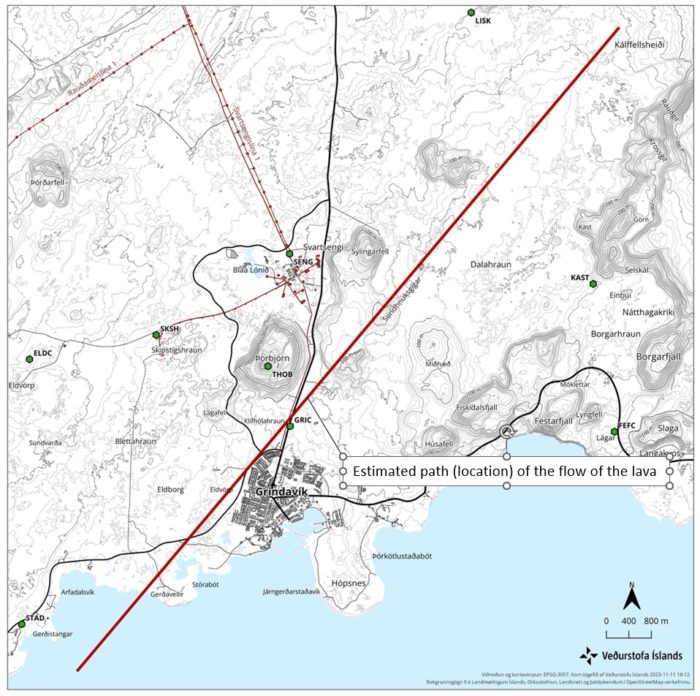Residents in Grindavík are experiencing a tense situation. Despite the unchanged likelihood of a volcanic eruption, the exact location and timing remain uncertain. The Icelandic Meteorological Office is gearing up to release a new assessment soon, keeping everyone on their toes.
In a bit of positive news, inhabitants have been permitted to enter eastern neighbourhoods of the town, escorted by rescue teams. There’s a growing hope that soon, everyone might be allowed back into their homes throughout Grindavík. However, that will not likely happen within the next two weeks or so.

The hazard assessment from the Meteorological Office hasn’t changed, indicating that the situation is almost identical to yesterday. Freysteinn Sigmundsson, a scientist at the University of Iceland, notes that while earthquake activities continue, there’s a slowdown in crustal movements, which is a good sign. He mentions that there are still indications of magma inflow into the conduit under the disturbed area, so it’s essential to be prepared for all possibilities.
Sigmundsson elaborates that even as the movements decrease, it could lead to a balance without an eruption, or the magma could still surface, albeit more slowly than before. The influx of magma has significantly reduced from its initial levels. If it does emerge, the resulting eruption is expected to be more similar to the recent Fagradalsfjall eruption rather than more extensive.
The outlook is more optimistic than it was over the weekend when there were fears of a potentially more powerful eruption. However, there’s been no notable change in the depth of the earthquakes. Estimating the depth of the magma is tricky, but models suggest it’s about half to one kilometre deep. No specific indications indicate that the magma is rising to the surface yet.
Interestingly, a subsidence of about one meter has been observed in Grindavík, most significantly in a one to two-kilometer-wide area in the town’s western part.
Icenews spoke to a resident of Grindavik who also has children; she told Icenews that the angst experienced by the children is coming out strong. While the information flowing from the authorities is working well, she said that it is clear that even if the eruption never happens, there will be psychological complications that will need addressing with the younger generations.
So, while the situation in Grindavík remains on a knife-edge, the latest developments offer hope. The town’s residents, while cautious, might hopefully be able to return to something close to normalcy.
This article is partly sourced from www.ruv.is, and the picture is taken from the Icelandic Meteorological Office.

